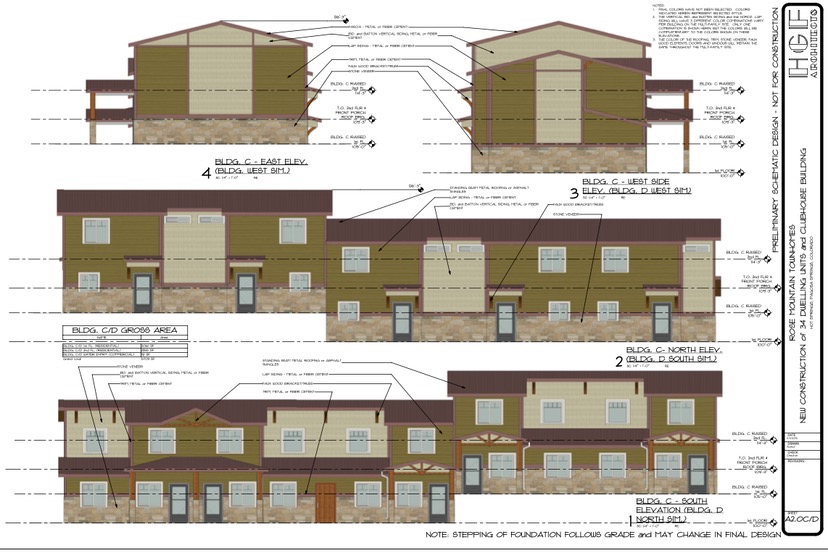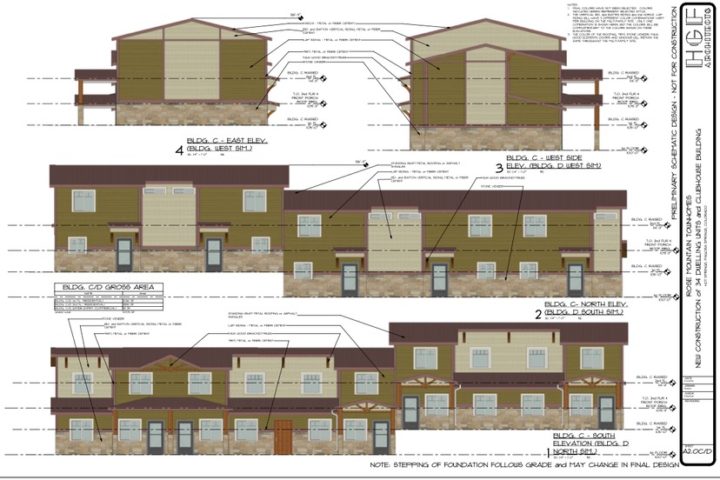We’re not talking, here in this editorial series, about “environmental sustainability” or “economic sustainability”.
We’re talking about “social sustainability”.
Pagosa Springs exhibited a certain kind of “social sustainability” during its first 100 years, remaining primarily a small, working class town dependent upon the timber and livestock industries. Few people, I suspect, embraced a vision of ‘never-ending economic growth’ during that first century.
In 1940, for example, the US Census counted 1,591 residents living in the town of Pagosa Springs. In the year 2000, the Census counted 1,591 residents living in Pagosa Springs.
That might illustrate the very essence of the term “socially sustainable”. Not growing, but also not dying. Sustaining.
That’s not the whole story, however, because after 1970 the unincorporated county outside the town limits began to exhibit signs of ‘unsustainable growth’. In 1940, the Archuleta County population was 3,806, and in 1970, the number had fallen to 2,733. But by the year 2000, the population had hit 9,898. By 2010 Archuleta County was at 12,084 residents — four-and-a-half times the 1970 population. (US Census numbers.)
Some of us are expecting a total of about 14,000 full-time residents in Archuleta County when the 2020 Census numbers are released. The majority of these residents, according to recent estimates, will be over the age of 50. If we were talking about both full-time and part-time residents, I suspect the median age in Pagosa would be closer to 60 years old.
For comparison, the median age in Eagle County — home to Vail, Colorado — is about 37 years. In Pitkin County — home to Aspen, Colorado — the median age is about 42.
Compared to pretty much the rest of Colorado, Pagosa Springs has become… well, we’re becoming a place where only retirees can afford to live. Is that the kind of community our elected and appointed leaders were hoping for, when they bought into long-range plans for a recreation/tourism economy? I seriously doubt it.
I had coffee with a couple of friends yesterday morning, and the conversation eventually came around to the changes we’ve seen in this little mountain town, and especially, the disappearance of reasonably priced homes. We kicked around the pros and cons of ‘deed restricted housing’ — a real estate mechanism that’s common in certain other Colorado mountain communities… but not here. Deed restrictions are used to ensure that housing that has benefited from taxpayer subsidies actually remains ‘affordable’, rather than quickly becoming ‘market rate’.
According to the Town of Breckenridge website, it appears that about 75% of the existing “deed restricted housing” has resulted from private public partnerships.
ACCOMPLISHMENTS
The Town of Breckenridge has been successful in using a variety of techniques to achieve our housing goal. By providing incentives including free density, annexation fee waivers, no plant investment fees for water service, building permit fee waivers, real estate transfer tax exemption, and positive points for other non-workforce housing projects. In addition to these tools, the town has worked in private public partnerships to develop approximately 75% of the existing deed restricted housing.
The following is a list of projects that serve the Breckenridge community by providing workforce housing.
Wellington Neighborhood & Lincoln Park (230 ‘for sale’ homes – under construction)
Moose Landing (36 affordable apartments – under construction
BRECK365 (100-112 affordable apartments – under construction)
Blue 52 (52 ‘for sale’ townhomes – completed 2018)
COTO Flats (18 affordable apartments – completed 2018)
Huron Landing (26 affordable apartments – completed 2017)
Denison Commons (30 affordable student housing rentals – completed 2017)
Pinewood II (45 low-income apartments – completed 2016)
Maggie Placer (9 ‘for sale’ townhomes – completed 2015)
Valley Brook Neighborhood (41 ‘for sale’ townhomes – completed 2012)
Vic’s Landing (24 ‘for sale’ condos – completed 2008)
Monarch Townhomes (13 ‘for sale’ townhomes – completed 2005)
Vista Point (18 ‘for sale’ homes – completed 2004)
Gibson Heights (40 ‘for sale’ homes – completed 2003)
Pinewood Village (74 affordable apartments – completed 2001)
Farmer’s Grove (35 ‘for sale’ homes – completed 2001)
Breckenridge Terrace (180 apartments – completed 2000)
Kennington Townhomes (36 ‘for sale’ townhomes – completed 1999)
As we can see, more than half the projects listed above have been built since the Great Recession. That’s a total of about 600 deed restricted dwelling units built or under construction, since 2012.
The Town of Pagosa Springs has been talking about deed restricted housing for about 15 years, but as far as I know, still has no template to share with developers.
There’s a 300-page document — the Land Use and Development Code (LUDC) — that could, meanwhile, include guidelines for developers who wish to build deed restricted homes for our local work force. That same document could include many additional guidelines aimed specifically at creating solutions to our housing crisis.
As far as I can tell, having looked through the LUDC on numerous occasions, the vast majority of aesthetic guidelines — those guidelines that are not related to health and safety concerns — actually work to prohibit affordable housing. I’m referring, for example, to the various guidelines that led the Archuleta County Housing Authority — in its noble effort to create 34 units of low-income housing on Hot Springs Boulevard — to design “low-income” dwelling units that cost $350,000 each.
I feel certain that the Town Planning Department believes they are contributing to a better — that is, more attractive — community, by enforcing numerous aesthetic requirements on new construction projects. I feel certain that the Town government, as a whole, believes that more tourism and more recreation will help create a community we all want to live in.
I feel certain that Pagosa Springs will gradually lose its work force, if the Town and County governments continue on their current trajectories. Businesses are already struggling to find employees, and the situation gets worse with each passing month.
The County government, over the past couple of years, has spent more than $20 million building law enforcement facilities for themselves. Over the past 10 years, the Town government has spent a similar amount on their own facilities — a brand new maintenance complex, new toys for the public parks, new trails, upgrades to the Community Center, and of course the ongoing maintenance of existing facilities and parks. Reportedly, the Town is planning a major remodel of its Town Hall.
And we are now hearing that the Town plans to build yet another recreational park near the High School. How many parks does an unsustainable community need?
We all know about our housing crisis. But our local governments act as if the crisis will fix itself… if they simply ignore it long enough.
Of course, the Town and County governments are easy targets for criticism, because they are spending money that belongs to all of us. But the truth of the matter is, we’re all in this together. You and me and everyone. The real estate industry. The construction industry. The tourism industry. The Chamber of Commerce. The retirees. The worker bees. The second-home owners. The healthcare industry. The ski area.
We’re all in this together. All heading toward an unsustainable future.
Time to start climbing out of the hole we’ve been digging?


